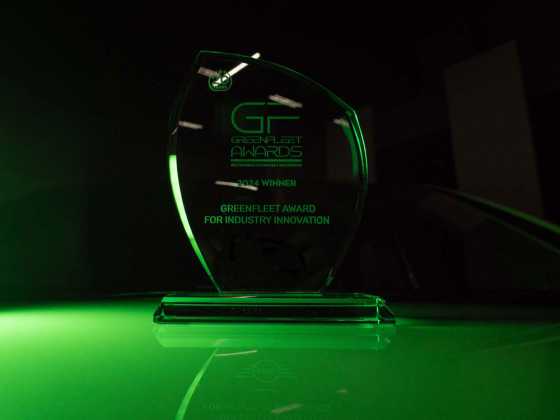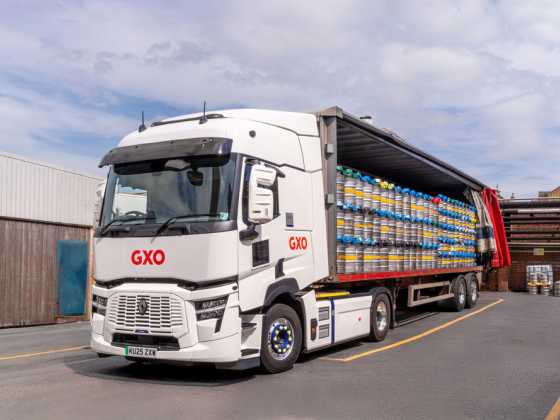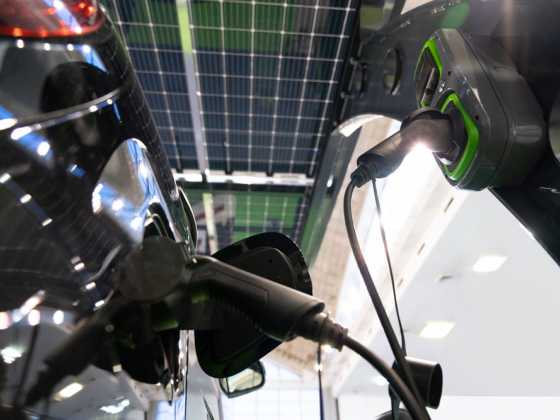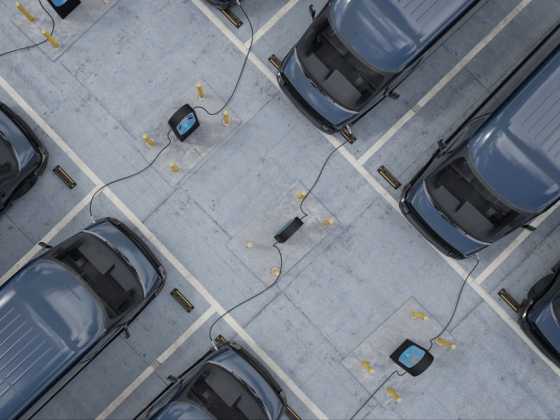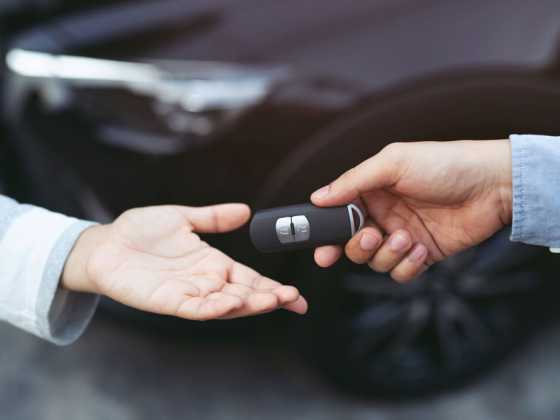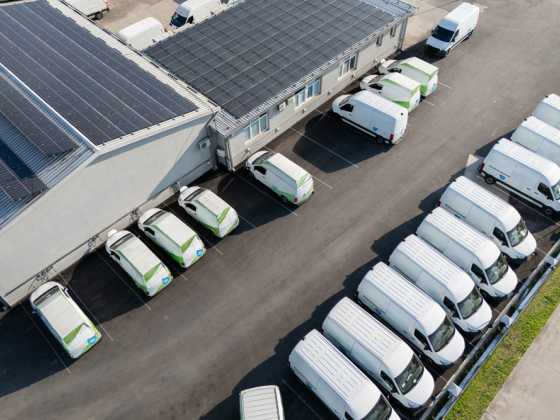A true test of public charging on the A-to-Z EV Rally

Now in its fourth year, the EV Rally is designed to test electric vehicles and the public charging infrastructure. This year the challenge was heightened, with more miles and a more diverse mix of electric vehicles taking part - from cars to electric trucks, vans, 4x4s, used-vehicles, minibuses - and even an electric motorbike. So how did the teams get on?
Designed to be a real-life test of how electric vehicles get on while driving long distances and relying on the public charging network, the A-to-Z EV Rally saw over 50 electric vehicles drive around 1,500 miles up and down the country for five days from 1-5 July.
Sponsored by Lex Autolease, the event was also an opportunity to showcase charging innovation, with many checkpoints at clean energy projects to demonstrate what the future of clean re-fuelling will look like.
The A-Z EV Rally follows the success of the first EV Rally Of Scotland (EVROS) in 2021 and the Great British EV Rally in 2022, which covered the length of John O’Groats to Land’s End. In 2023, the rally visited all capital cities of the UK and Ireland.
This year’s EV Rally saw teams navigating an A-Z theme - with participants visiting checkpoints in alphabetical order.
The 1,500 mile route
Starting at the AA’s premises in Oldbury, and finishing at Cawley House in Chester, the route took teams to see innovative clean energy projects, charging hubs, towns, and scenic viewing points, all in alphabetical order.
Day one covered just under 270 miles, departing Oldbury and visiting the Harris Maxus dealership in Liverpool, the Jetty Museum at Lake Windermere, Dovenby’s motor circuit, the River Ellen in Maryport, with an overnight stop at Carlisle.
On day two, participants ventured north to Gretna in Scotland, before heading east to Gateshead, then south towards Sheffield. Checkpoints included a PoGo charge at M Galleries Shopping Centre in Washington, the Heugh Battery Museum in Hartlepool, the Sports and Social Club, in the shadow of Drax’s Power Station in Selby, a Compleo charging top-up at Tingley Garden Centre near Leeds, with the final destination at Mercedes-Benz Trucks’ Tankersley offices.
The third day was known as “The Beast”, with teams having to negotiate around 365 miles as they headed east towards Grimsby, then south towards Cambridge, via Norwich. Check points included a National Grid power station, a visit to myenergi’s sustainable HQ near Grimsby, GRIDSERVE’s impressive Electric Forecourt in Norwich, Osprey charging facilities in Diss, a solar farm at Staughton Airfield, and a chance to look at the Environment Agency’s electric fleet at Ely.
Teams left Cambridge on day four for another challenging day of 315 miles. With visits to South Mimm’s Services for some AppleGreen charging, the third stop was a brand new EV charging facility from AW Energy, featuring a wind turbine, battery storage, eHGV charging capability and ultra-rapid chargers - showcasing what the future of EV charging and clean energy looks like. The route then took the Rally to the Fastned Superhub near Oxford, BMW UK & MINI’s premises in Farnborough, and GRIDSERVE’s charging stations at Exeter Services.
The final leg of the Rally on day five covered 265 miles miles as teams headed through Wales, with the final ‘Z’ checkpoint at the ‘Z’ero carbon Rhug Estate, an organic farm estate with a sustainable business model. The “wrap party” for the Rally was hosted by headline partner Lex Autolease at the impressive Cawley House in Chester.
So how did the teams get on?
In a nutshell, all teams navigated the Rally successfully, meeting checkpoints and reaching their final destination on day five. For some, careful planning of stops was the strategy. For others, it was to rely on in-cab technology and apps to charge as and when needed, to replicate a more ‘traditional’ approach to refuelling.
Needless to say, those in vans, trucks and motorbikes had to be more careful with planning, due to their shorter ranges, access limitations - and in some cases, specific charging requirements.
Team National Grid, for example, were in a van, a 4x4 (not yet on the market), a motorbike and a converted classic Porsche - with none able to do over 150 miles on a single charge. Head of fleet Lorna McAtear explains the reasoning behind this: “We are using vehicles that are not mainstream or are new to the sector. We want to remind people that there are different vehicles out there and not to forget these niche areas when looking at solutions and infrastructure.”
Joining Lorna on Team National Grid was BBC South’s Transport Correspondent Paul Clifton with daughter Frankie, driving a classic Porsche which had been converted to battery power by Everrati.
The EV Cafe’s Sam Clarke was also on Team National Grid - and chose to ride the 1,500 journey on an electric motorbike - the first time ever attempted in the Rally. The bike, provided by Zero Motorcycles, could only take a slow charge, using AC current rather than DC, which posed extra challenges. One solution was to plug the bike into a car overnight so it was fully charged the next day.
Lead sponsor Lex Autolease hosted motoring journalist and FairCharge campaign lead, Quentin Willson, on their team, driving an eight year old Tesla Model S with 253,000 miles on the clock. Quentin observed that the vehicle was still returning around 250 miles on one charge - showing that EV batteries “last much longer than people believe”.
Seeking truck friendly charging
Truck manufacturers DAF and Mercedes Benz Trucks took part in the Rally, to experience how “truck-friendly” the public charging infrastructure is.
Team DAF, who were behind the wheel of an LF Electric, observed that on some occasions, they would get to charging facilities and be faced with obstacles like weight restrictions or canopies with width restrictions. DAF got round some of these issues by seeking out truck-specific charging facilities, such as their Norwich-based Dealership which has a 180 kWh DC electric vehicle charging facility from Paccar.
Team Mercedes-Benz Trucks UK took part with a loaded 44-tonne eActros 600, which comfortably got through the Rally, thanks to its range of over 300 miles.
Data from Paua observed the eActros 600 took a charge session at the Norwich GRIDSERVE forecourt which reached maximim power of 349.8kW, which is a record for the site. What’s more, the session ran at full power until 94% when the load started to drop off, and this is despite the load being shared with a parallel charger.
Team Maxus were behind the wheel of an eDeliver 3, eDeliver 7, and MIFA 9 to show their versatile electric commercial vehicle offer, with “electric van man” Paul Kirby taking part, interviewing key members of the Maxus dealership network on route. As Logistics Partner, Maxus also provided the set-up crews with electric vans.
Team Europcar had a Jeep Avenger, Skoda Enyaq, Mercedes EQE SUV and Renault Kangoo E-Tech Van as their vehicles. They were driven by EV record breaker, Kevin Booker, Europcar’s head of electric mobility Tom Middleditch, and others from the business.
Tom Middleditch explained why the Rally was eye opening, even for seasoned EV drivers: “Every member of the Europcar team already drives an EV as a company car. However, like most people who drive for business, much of our week uses the same roads and routes and the same charging routines, whether at home, the office or elsewhere. What the EV Rally did was take us out of our comfort zone – and it proved that going into the unknown wasn’t that unknown at all.”
Europcar was also the Rally’s Vehicle Provider, and hosted media crews Sara Sloan and John Curtis in Teslas, as well as GREENFLEET event organisers.
Technology for a smooth-running rally
The Rally’s EV charge card partner, Paua, generously provided RFID cards to participants, giving them access to 53,000 charge point connectors and 35 networks, which were easily located using the Paua-designed EV Rally app.
Team Paua chose to drive a second-hand Renault Zoe, with the aim of showing that there are affordable options for everyone, as well as an electric van - the Nissan E-NV200.
Team Webfleet meanwhile were behind the wheel of the Volkswagen ID.7 and a Toyota Proace electric van with 200kg of additional weight. And as the event’s technology partner, Webfleet fitted selected participating vehicles with advanced telematics solutions to provide insightful data on vehicle performance, location tracking and efficient route planning, as well as data on EV-specific metrics such as battery status and range. This data enabled league tables to be created to find out which teams were driving the safest manner and most efficiently, with more on this later.
Webfleet also partnered with Justdiggit to positively offset the carbon emissions that resulted from charging on the EV Rally for the third year running.
As roadside assistance partner, Team AA took part in the Rally again, with AA president Edmund King OBE leading the team. Commenting on the infrastructure improvements, Edmund King OBE, said: “Three years ago when we did the Rally in Scotland, we planned meticulously; I had a co-driver with a laminated sheet with every charge point listed. You don’t need that now. The cars have got much better range, there are more chargers, and they are more reliable.”
Drivetech meanwhile was the Rally’s driver training partner and offered eco and safety-driving tips to help teams get the most out of their vehicles.
Electric power
Team IVECO brought its eDaily Minibus with capacity for 23 passengers, and an IVECO eDaily with its “Mobile Power Station” which can power demanding equipment, such as road maintenance machinery or fire-fighting equipment. In the case of the EV Rally, it powered an electric power tool for a competition against Adam Bishop, one of the world’s strongest men. The challenge saw Bishop test his manual wood cutting skills against an IVECO-charged power tool, with the power tool taking the win.
Drax Electric Vehicles and its colleagues from BMM Energy took part in the Rally in a VW ID Buzz and a Polestar. They confidently navigated the Rally with a strategy of charging as-and-when was needed - without prior planning, with the aim of showing that EV driving can be the same experience as driving conventionally fuelled ICE vehicles.
Embracing the Rally in a BYD Atto 3 and Volvo EX30, team Tusker made it to the finish line without any issues, as did Team OVO who took part in two Toyota Proace vans and two Volkswagen ID Buzzs, with multiple people from the business taking part over the five days.
Team Compleo UK were behind the wheels of a Hyundai Ioniq 5 and the Kia EV9, and proudly showcased their flagship installation at Tingley Garden Centre on day two for a charge on one of their 56 EV chargers - an excellent example of hassle-free destination charging.
Thanks to industry collaboration from Compleo, The AA, EZ-Charge, Formula Space, and GREENFLEET, an all-female team was put together for Women Drive Electric - a community group that has been set up to be a “safe space” for women to discuss all things relating to EVs. Their presence in the striking pink-wrapped Tesla aimed to promote their aim of making electric vehicles more appealing and attainable for females, as well as promoting gender diversity in the fleet sector.
BMW and Mini turned heads on the Rally, with their convoy of BMW iX2s, i5 Tourings and MINI Countrymen, showcasing the versatility of their electric vehicles offering. BMW also kindly provided GREENFLEET editor Angela Pisanu and Publisher George Petrou in a BMW iX2. Angela Pisanu noted a particular function that was useful in the vehicle: “The voice command is great; I did portions of the Rally on my own, so being able to just ask the vehicle where the nearest charging points were and not fiddle around, was a massive help.”
Team myenergi chose a Volkswagen ID. Buzz and BYD Seal for the Rally, with co-founder Jordan Brompton hugely impressed with the 300+ mile range she was getting out of the BYD. As an electric vehicle driver for seven years, Jordan was not worried about the infrastructure and took part in the Rally to bust myths and misinformation about EVs.
Unpicking the data
The data uncovered from the Webfleet telematics revealed that Team National Grid came up top of the leaderboard for safe and sustainable driving in their Spartan EV, and Team Women Drive Electric took the top spot for efficiency in their Tesla Y.
Data from Paua showed that 24,145 kWh was used on the Paua network during the Rally. The top three used networks were GRIDSERVE, Instavolt and Applegreen. Overall, the rally clocked up a total charge time of 479 hours.
The single largest charge session was from the Mercedes-Benz Trucks UK in the eActros 600, and the single longest charge session was from Europcar, with the only overnight charge on a Connected Kerb point.
Final thoughts
The A-to-Z EV Rally concluded a success, with teams completing around 1,500 miles in their electric vehicles, whilst relying on the public charging network, without a hitch.
Teams were in agreement that the charging infrastructure is good, with those on previous Rallies noting a big improvement from the earlier years, in terms of the amount of chargers, choice of speeds, and the reliability. Payment was simple (thanks to the Paua RFID card), and the technology to show location, type and availability of chargers was in abundance.
A good range of EV charging types, from fast charging hubs, to slower workplace and destination charging, were showcased, showing that EV charging can fit a range of scenarios.
The Rally also showed glimpses of truck friendly fast charging, demonstrating that the network is gearing up for a future where all vehicle sizes are catered for.
And crucially, the Rally showed the importance of industry collaboration in meeting net-zero targets. Event manager Colin Boyton summed up: "It's been an epic five days, crammed full of innovation, clean energy, state of the art charging... and most crucially, it's been an excellent example of collaboration. All the teams have come together with the collective aim of showcasing that electric vehicles and the public charging infrastructure is up for the job. I hope our "stress test" of public charging will go a long way in combatting EV negativity and misinformation."
Planning is now in session for 2025’s EV Rally, so keep your eyes on www.ev-rally.co.uk and the EV Rally LinkedIn page for more details.

